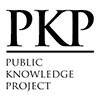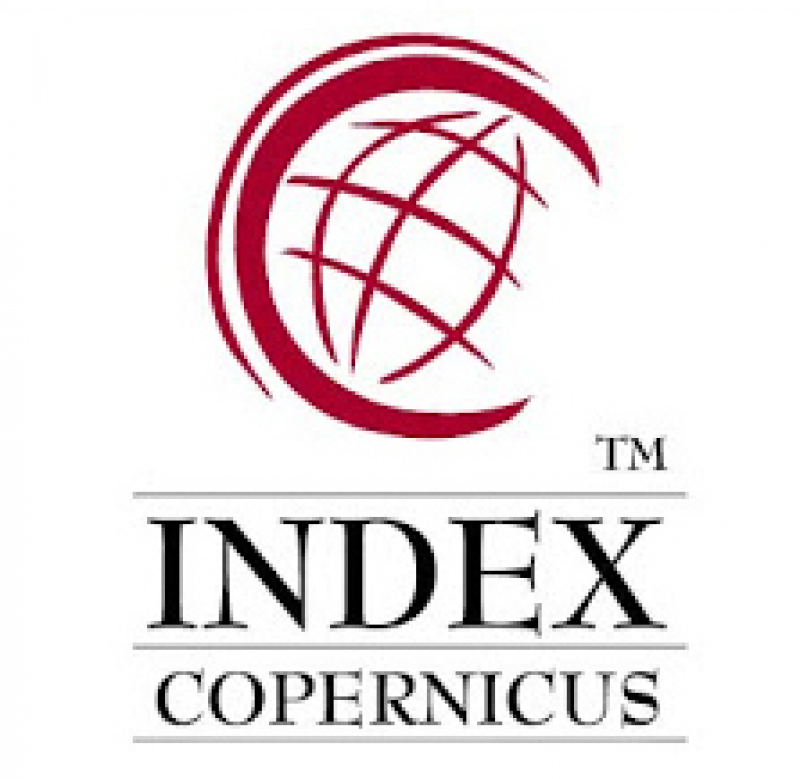Building Emotional Creativity Through Art Appreciation Learning
Abstract
This research aims to describe: 1) the effects of art appreciation on emotions and cognitive and; 2) the role of art appreciation learning in building students' emotional creativity. The research uses a qualitative approach with an exploratory type of research that collects data using the library research method. Google Scholar as a database that is also linked to Scopus and PubMed was used to collect literature with a time span of 2016-2025. Data were analyzed using synthesis techniques that present data descriptively and narratively. The results showed two sub-sections. First, the effects of art appreciation on emotions and cognition, including increasing the experience of aesthetic emotions (diversity, intensity, and frequency of emotions), meaning-making, fostering emotional intelligence, a sense of empathy, implicit emotion regulation skills, self and others' understanding, generating inspiration and stimulating creative ideas, and awakening imagination and imagery. Secondly, art appreciation learning acts as a medium for emotional education and character development, creating an interactive reflective space, paving the way for new experiences, and free space for directed expression. Experiences from learning art appreciation can become patterns that are abstracted in everyday life. Indirectly, the research provides a basic description of the relationship between emotional creativity and art appreciation in the context of education.
Keywords
Full Text:
PDFReferences
Alistiana, L. (2020). Proses Kreativitas dan Apresiasi Seni Dalam Pembelajaran Seni Tari Bagi Mahasiswa PIAUD UIN Sunan Ampel Surabaya. Attadrib: Jurnal Pendidikan Guru Madrasah Dan Ibtidaiyah, 3(2), 19–25. https://doi.org/10.31538/attadrib.v3i2.106
An, D., & Youn, N. (2018). The Inspirational Power of Arts on Creativity. Journal of Business Research, 85, 467–475. https://doi.org/10.1016/j.jbusres.2017.10.025
Averill, J. R. (1999). Individual Differences in Emotional Creativity: Structure and Correlates. Journal of Personality, 67(2), 331–371.
Averill, J. R. (2002). Emotional Creativity: Toward “Spiritualizing the Passions.” In C. R. Snyder & S. J. Lopez (Eds.), Handbook of Positive Psychology (pp. 172–185). Oxford University Press.
Averill, J. R. (2004). A Tale of Two Snarks: Emotional Intelligence and Emotional Creativity Compared. Psychological Inquiry, 15(3), 228–233.
Biglino, G., Layton, S., Lee, M., Sophocleous, F., Hall, S., & Wray, J. (2019). ’Making the Invisible Visible ’: An Audience Response to An Art Installation Representing the Complexity of Congenital Heart Disease and Heart Transplantation. Medical Humanities, 45(4), 399–405. https://doi.org/10.1136/medhum-2018-011466
Chen, L.-C. (2023). Effect of Visual Arts Appreciation Education on Children’s Aesthetic Development: An Empirical Study. International Journal of Education and Research, 11(4). www.ijern.com
Dolese, M. J., & Kozbelt, A. (2020). Communication and Meaning-Making Are Central to Understanding Aesthetic Response in Any Context. Frontiers in Psychology, 11(473). https://doi.org/10.3389/fpsyg.2020.00473
Duh, M. (2016). Art Appreciation for Developing Communication Skills among Preschool Children. Center for Educational Policy Studies Journal, 6(1), 71–93. https://doi.org/https://doi.org/10.26529/cepsj.105
Edwita, Safitri, D., Maksum, A., Yunaz, H., Marini, A., & Muda, I. (2019). The Effect of Student Cultural Enculturation on Student Art Appreciation. International Journal of Education and Practice, 7(4), 469–478. https://doi.org/10.18488/journal.61.2019.74.469.478
Fröber, K., & Thomaschke, R. (2021). In the Dark Cube: Movie Theater Context Enhances the Valuation and Aesthetic Experience of Watching Films. Psychology of Aesthetics, Creativity, and the Arts, 15(3), 528–544. https://doi.org/10.1037/aca0000295
Grosz, M. P., Lemp, J. M., Rammstedt, B., & Lechner, C. M. (2022). Personality Change Through Arts Education: A Review and Call for Further Research. Perspectives on Psychological Science, 17(2), 360–384. https://doi.org/10.1177/1745691621991852
Hadijah, N. (2024). Developing Emotional Intelligence Through Arts Education. Research Invention Journal of Research in Education, 4(3), 1–4. https://doi.org/10.59298/RIJRE/2024/4314
Housen, A. (1999, September 27). Eye of the Beholder: Research, Theory and Practice. Aestethic and Art Education: A Transdiciplinary Approach. https://vtshome.org/wp-content/uploads/2016/08/5Eye-of-the-Beholder.pdf
Husselman, T. A., & Filho, E. (2024). Stimulus Complexity Can Enhance Art Appreciation: Phenomenological and Psychophysiological Evidence for the Pleasure-Interest Model of Aesthetic Liking. Journal of Intelligence, 12(4). https://doi.org/10.3390/jintelligence12040042
Ishiguro, C., & Okada, T. (2019). How Does Art Appreciation Promote Artistic Inspiration? The Journal of Creative Behavior, 55(2), 489–500. https://doi.org/https://doi.org/10.1002/jocb.469
Ivcevic, Z., Brackett, M. A., & Mayer, J. D. (2007). Emotional Intelligence and Emotional Creativity. Journal of Personality, 75(2), 199–236. https://doi.org/10.1111/j.1467-6494.2007.00437.x
Jin, X., & Ye, Y. (2022). Impact of Fine Arts Education on Psychological Wellbeing of Higher Education Students Through Moderating Role of Creativity and Self-efficacy. Frontiers in Psychology, 13. https://doi.org/https://doi.org/10.3389/fpsyg.2022.957578
Mbaka, N., & Isiramen, O. M. (2020). The Changing Role of An Exploratory Research in Modern Organisation. International Journal of Business Management, 4(12), 27–36. https://doi.org/10.5281/zenodo.6992256
Meng, F. (2021). Aesthetic Illusion as a Connection of Cognitive Neural Basis, Art Appreciation and Modern Ideology. Philosophia (United States), 49(4), 1601–1617. https://doi.org/10.1007/s11406-020-00311-5
Miu, A. C., Piţur, S., & Szentágotai-Tatar, A. (2016). Aesthetic Emotions Across Arts: A Comparison Between Painting and Music. Frontiers in Psychology, 6(1951), 1–9. https://doi.org/10.3389/fpsyg.2015.01951
Mortu, A. (2023). Prediction and Art Appreciation. Review of Philosophy and Psychology. https://doi.org/10.1007/s13164-023-00696-8
Onians, J. (2018). Art, The Visual Imagination and Neuroscience: The Chauvet Cave, Mona Lisa’s Smile and Michelangelo’s Terribilitá. Cortex, 105, 182–188. https://doi.org/10.1016/j.cortex.2017.10.009
Parsons, M. J. (1987). How We Understand Art: A Cognitive Developmental Account of Aesthetic Experience. Cambridge University Press. https://psycnet.apa.org/record/1987-98081-000
Pizzolante, M., Sarcinella, E. D., Borghesi, F., Bartolotta, S., Gaggioli, A., & Chirico, A. (2023). “Being Immersed in Aesthetic Emotions”: Comparing Immersive Vs. Non Immersive VR in Aesthetic Emotions Elicitation. Annual Review of Cyber Therapy and Telemedicine, 21, 117–123.
Riswarie, A., & Damajanti, I. (2020). Using Art to Foster Empathy: A Literature Review. AESCIART: International Conference on Aesthetics and The Sciences of Art, 434–441. https://doi.org/10.51555/338653
Riswarie, A., Damajanti, I., & Adriati, I. (2019). Application of Housen’s Model of Aesthetic Development in Higher Education: An Exploration of Cognitive Aspects during Art Appreciation. Journal of Physics: Conference Series, 1175(1). https://doi.org/10.1088/1742-6596/1175/1/012173
Rodriguez, R. M., Fekete, A., Silvia, P. J., & Cotter, K. N. (2021). The Art of Feeling Different: Exploring the Diversity of Emotions Experienced During an Art Museum Visit. Psychology of Aesthetics, Creativity, and the Arts. https://doi.org/https://doi.org/10.1037/aca0000443
Saif, M. (2024). Impact of Arts Education on Psychological wellbeing among Undergraduate Students. Al-Nasr, 3(1), 99. https://doi.org/https://doi.org/10.53762/alnasr.03.01.e07
Sawada, K., Koike, H., Murayama, A., Nishida, H., & Nomura, M. (2024). Appreciation Processing Evoking Feelings of Being Moved and Inspiration: Awe and Meaning-making. Journal of Creativity, 34(1), 1–6. https://doi.org/10.1016/j.yjoc.2024.100076
Serrao, F., Chirico, A., Gabbiadini, A., Gallace, A., & Gaggioli, A. (2024). Enjoying Art: An Evolutionary Perspective on The Esthetic Experience from Emotion Elicitors. Frontiers in Psychology, 15, 1–10. https://doi.org/10.3389/fpsyg.2024.1341122
Shen, S., Song, Y., & Ye, L. (2024). The Impact of the Preferences of High School Students on Art on Their Personality Traits. Lecture Notes in Education Psychology and Public Media, 61(1), 67–73. https://doi.org/10.54254/2753-7048/61/20240540
Sherman, A., & Morrissey, C. (2017). What is Art Good for? The Socio-epistemic Value of Art. Frontiers in Human Neuroscience, 11, 1–17. https://doi.org/10.3389/fnhum.2017.00411
Trnka, R. (2023). Emotional Creativity: Emotional Experience as Creative Product. In Z. Ivcevic, J. D. Hoffmann, & J. C. Kaufman (Eds.), The Cambridge Handbook of Creativity and Emotions (pp. 321–339). Cambridge University Press & Asessment. https://doi.org/doi:10.1017/9781009031240.022
Van Dongen, N. N. N., Van Strien, J. W., & Dijkstra, K. (2016). Implicit Emotion Regulation in The Context of Viewing Artworks: ERP Evidence in Response to Pleasant and Unpleasant Pictures. Brain and Cognition, 107, 48–54. https://doi.org/10.1016/j.bandc.2016.06.003
Wei, R., Lyu, X., Liang, Z., & You, Y. (2024). Exploration of Neuroplasticity: Changes in Aesthetic Cognition and Enhancement of Aesthetic Experiences. Inquiry (United Kingdom). https://doi.org/10.1080/0020174X.2024.2335998
DOI: http://dx.doi.org/10.18415/ijmmu.v12i1.6568
Refbacks
- There are currently no refbacks.
Copyright (c) 2025 International Journal of Multicultural and Multireligious Understanding

This work is licensed under a Creative Commons Attribution-NonCommercial-NoDerivatives 4.0 International License.
https://ijmmu.com
editor@ijmmu.com
facebook.com/ijmmu
Copyright © 2014-2018 IJMMU. All rights reserved.




































